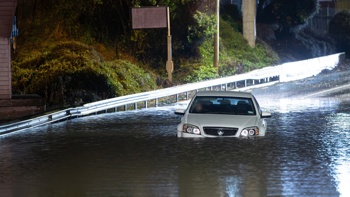COMMENT
In the hazy lazy days of the lockdown I found myself in front of a supermarket magazine stand. Sadly I was looking at how few magazines there were because of the collapse of the local industry. But then I saw a copy of new Zealand geographic and I realised it was one of the few survivors. In fact it now claims to be New Zealand’s only remaining current affairs magazine.
So I bought it. And I’m so glad. It is such a good read. But it’s lead article was very depressing.
It was about the death of the Hauraki Gulf and the failure of the Hauraki Gulf Marine Park.
In 2000, New Zealand established its first national park of the sea, the Hauraki Gulf Marine Park. Covering 13,900 sq km, the park’s objective was to protect the gulf’s “life-supporting capacity. At the beginning of March the Hauraki Gulf Forum released a report detailing the progress in the Park’s first 20 years. There has been none. The Gulf is as close to dead as it could be.
However, with the exception of a handful of tiny marine reserves, commercial and recreational fishing was allowed to continue throughout the entire gulf. Twenty years later, the creation of the park has failed to prevent ecosystem collapse.
Only 0.3 % of the park is a no take zone. It remains legal to drag dredges and trawls across the sea floor, even recreationally. Recreational fishers are pulling out just as much fish as commercial players, The snapper population is down to about 20% of what scientists calculate pre-fishing numbers would have been. Baitfish such as anchovies and pilchards have disappeared. Crayfish are functionally which means the Kina or sea urchins they eat now cover vast areas of the seafloor like a plague.
In 2000, 4% of the seabird species in the gulf were threatened with extinction. Today, 22% are. Spotted shags, which once flourished in their tens of thousands, are down to 300 pairs; scientists suspect a lack of food.
On Auckland’s beaches, stormwater and sewage overflows make 38% of the 50 monitored sites frequently unsafe to swim. Three sites are never safe to swim.
It’s to Auckland and the nation’s shame. And that shame is repeated up and down our coastline.
So today a Fisheries reform plan has been presented to the government by the public awareness group LegaSea and the New Zealand Sport Fishing Council. The groups say change is needed urgently to address fish depletion and biodiversity loss. It’s called Rescue Fish.
They have some radical ideas. Scrap the quota system as they say it’s failed. The Crown to buy back all existing rights to fish at fair value. A new independent Authority to be established to set catch limits based on independent scientific research. Industrial fishing techniques such as inshore bottom trawling and dredging to be banned.
Fishing reform comes up time and time again and it’s always shot down by both commercial and recreational fishing interests who are just as bad as each other. The science is telling you that your right to fish is being taken from you because there’s no fish left to fish. And so it may very well be time to Stop Fishing so We Can Fish.
Take your Radio, Podcasts and Music with you









